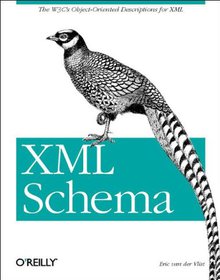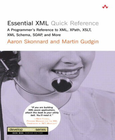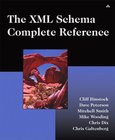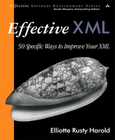XML Schema
The W3C's Object-Oriented Descriptions for XML

Book Details:
| Publisher: | O'Reilly Media |
| Series: | OReilly , Object-Oriented |
| Author: | Eric Van der Vlist |
| Edition: | 1 |
| ISBN-10: | 0596002521 |
| ISBN-13: | 9780596002527 |
| Pages: | 400 |
| Published: | Jun 15 2002 |
| Posted: | Nov 19 2014 |
| Language: | English |
| Book format: | |
| Book size: | 4.26 MB |
Book Description:
If you need to create or use formal descriptions of XML vocabularies, the W3C's XML Schema offers a powerful set of tools for defining acceptable document structures and content. An alternative to DTDs as the way to describe and validate data in an XML environment, XML Schema enables developers to create precise descriptions with a richer set of datatypes?such as booleans, numbers, currencies, dates and times?that are essential for today?s applications.Schemas are powerful, but that power comes with substantial complexity. This concise book explains the ins and outs of XML Schema, including design choices, best practices, and limitations. Particularly valuable are discussions of how the type structures fit with existing database and object-oriented program contexts. With XML Schema, you can define acceptable content models and annotate those models with additional type information, making them more readily bound to programs and objects. Schemas combine the easy interchange of text-based XML with the more stringent requirements of data exchange, and make it easier to validate documents based on namespaces.You?ll find plenty of examples in this book that demonstrate the details necessary for precise vocabulary definitions. Topics include:Foundations of XML Schema syntaxFlat, "russian-doll", and other schema approachesWorking with simple and complex types in a variety of contextsThe built-in datatypes provided by XML SchemaUsing facets to extend datatypes, including regular expression-based patternsUsing keys and uniqueness rules to limit how and where information may appearCreating extensible schemas and managing extensibilityDocumenting schemas and extending XML Schema capabilities through annotationsIn addition to the explanatory content, XML Schemaprovides a complete reference to all parts of both the XML Schema Structures and XML Schema Datatypes specifications, as well as a glossary. Appendices explore the relationships between XML Schema and other tools for describing document structures, including DTDs, RELAX NG, and Schematron, as well as work in progress at the W3C to more tightly integrate XML Schema with existing specifications.No matter how you intend to use XML Schema - for data structures or document structures, for standalone documents or part of SOAP transactions, for documentation, validation, or data binding ? all the foundations you need are outlined in XML Schema.
Download Link:
Related Books:
Essential XML Quick Reference
A Programmer's Reference to XML, XPath, XSLT, XML Schema, SOAP, and More
XML and the technologies surrounding it have grown immensely in recent years -- in both use and complexity. There's more to know than any one individual can possibly remember. In Essential XML Quick Reference, two leading XML experts present an authoritative reference that covers all the XML-related technologies that matter. In one concise, accessible, example-rich guide, Aaron Skonnard and Martin Gudgin bring together critical information about XML, XSL, XSLT, schemas, namespaces, XPath, SAX, DOM, SOAP, even Microsoft's BizTalk. Following the hugely successful format pioneered by Patrick Chan's Java Almanacs, the authors provide a complete catalog of syntax references, combined with brief, to-the-point overviews of each technology and standard. This...
The XML Schema
Complete Reference
This book is designed to help developers leverage the full power of XML Schema using whatever tools and approaches they're most comfortable with. Rather than forcing XML developers down a single path, the authors give them practical insights and sample code for making informed choices. Their detailed examples demonstrate every feature incorporated in the W3C XML Schema Recommendation, while offering practical guidance on integrating XML Schema into many popular platforms, including .NET, Java, and Oracle. They cover virtually every aspect of development with XML Schemas. Coverage includes: applications for schemas; simple and complex types; XML processing; using schemas with DOM and SAX; XML Schema syntax, levels, elements, attributes, the powerful X...
Effective XML
50 Specific Ways to Improve Your XML
Learning the fundamentals of XML might take a programmer a week. Learning how to use XML effectively might take a lifetime. While many books have been written that teach developers how to use the basic syntax of XML, this is the first one that really focuses on how to use XML well. This book is not a tutorial. It is not going to teach you what a tag is or how to write a DTD (Document Type Definition). Instead it's going to tell you when, why, where, and how to use such tools effectively (and equally important when not to use them).Since XML has become a fundamental underpinning of new software systems, it becomes important to ask new questions, not just what XML is, but how does one use it effectively? Which techniques work and which don't? Perhaps m...
2007 - 2021 © eBooks-IT.org



